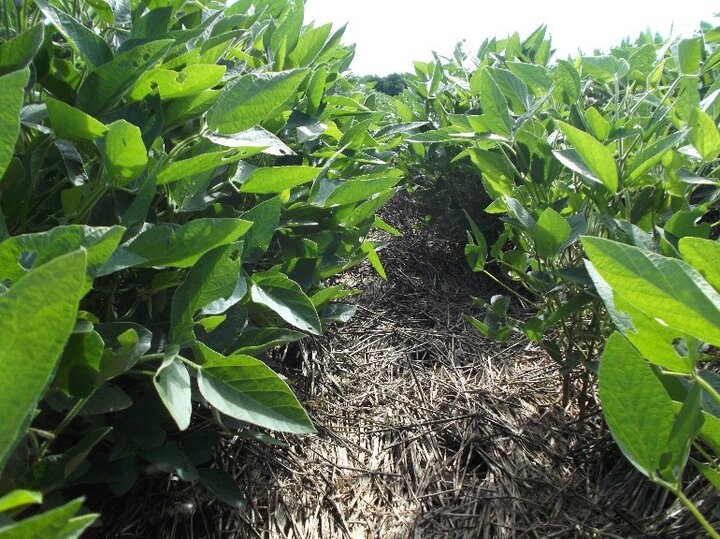This project is also a collaboration with
David Weisberger and Virginia Nichols of the Iowa State University Department of Agronomy;
Sarah Carlson – Strategic Initiatives Director, Practical Farmers of Iowa; and
Nilovna Chatterjee – Postdoctoral Research Associate, University of Nebraska-Lincoln

How well do cover crops control weeds and can they offset herbicide costs in corn-soybean cropping systems across the Corn Belt? We are working on a meta-analysis to answer these questions. Meta-analysis is a quantitative, systematic method to synthesize prior research. The power of such an analysis is that it allows us to investigate overall trends of a particular treatment by combining results from many experiments.
We have analyzed results from 15 experiments across nine states (Figure 1), including one in Nebraska. In order to be included in our analysis, experiments needed to fit specific criteria:
- A fall-planted cover crop was grown before corn or soybean.
- All other management – minus the inclusion of a winter cover crop – needed to remain constant.
- The experiment was located within one of the top corn and soybean producing states of the Midwestern Corn Belt.
Overall we have found:
Cover crops have been found to reduce weed biomass across the Corn Belt. Nebraska experiments show adequate cover crop biomass to provide weed control, although growth can vary substantially from year to year.
- Across the Corn Belt, experiments show that cover crops are generally more effective at reducing weed biomass (size of weeds) compared to weed density (amount of weeds). This suggests that cover crops may be more beneficial from the standpoint of controlling the size of weeds and thus the efficacy of a herbicide program.
- Cover crop termination method impacted the efficacy of the cover crop to control weeds. Experiments that used herbicides or a combination of herbicides and mowing to terminate the cover crop, or where cover crops were winter-killed were found to be more effective at weed control than cover crops terminated solely by crimping or mowing.
- When a cover crop preceded corn, cover crop biomass of approximately 3500 lbs/acre tended to consistently reduce weed biomass and weed density. When a cover crop preceded soybean, results in our analysis were variable; some experiments showed significant weed control with smaller amounts of cover crop biomass (less than 1000 lbs/acre), while others had ineffective weed control with smaller or larger amounts of cover crop biomass before soybean. Effective weed control from a cover crop before soybean is pictured in Figure 2.
- Experiments included in our analysis utilized grass, legume, and mixed cover crop species. We did not find differences in the efficacy of weed control with different cover crop species. We also did not find differences in weed control if an experiment planted was planted to corn or soybean following the cover crop.
What does this mean for cover crops and weed control in Nebraska?

- The Nebraska study included in our analysis was conducted at the West Central Research and Extension Center at North Platte and on a nearby producer’s field from 2016-2017. Both sites were under no-till, irrigated, continuous corn management. Researchers found between 3300-3600 lbs/acre of rye biomass reduced both weed density weed biomass by more than 90%. Cover crops were planted from mid-September to mid-October in these experiments and were terminated with herbicides in mid-April.
- Research collected from 2015-2017 at the South Central Agricultural Laboratory near Clay Center found that cereal rye cover crop growth ranged from 600 to more than 5000 lbs/acre when planted between late September and late October. The earlier planted rye, which always produced the highest amounts of biomass, was following an early- or medium-maturity corn hybrid. This work did not find yield differences between medium- (97-day) and late-maturity (111-115-day) corn hybrids.
